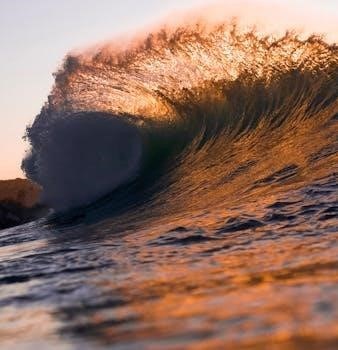Understanding the rhythmic rise and fall of tides is crucial for anyone visiting or living near Wells, Maine. The tides in this area are influenced by lunar and solar forces, creating predictable patterns. These patterns are published in tide charts, which are essential tools for planning beach activities. Accurate tide predictions allow users to anticipate high and low water levels safely.
Importance of Tide Charts
Tide charts are indispensable tools for anyone engaging in coastal activities in Wells, Maine. These charts provide essential information regarding the timing and height of high and low tides, directly impacting safety and recreational planning. For beachgoers, tide charts help determine when the beach will be expansive or submerged, crucial for safe walking, sunbathing, or setting up for the day. Fisherman rely on tide charts to time their fishing trips, knowing that certain species are more active during specific tidal phases. Furthermore, boaters need accurate tide data to navigate the waters safely, avoiding grounding or getting stranded. Knowing the tide cycles is also vital for those exploring tide pools, as it allows for safe entry and exit. In essence, tide charts are not just informative documents, they are critical for anyone seeking to enjoy the coast responsibly, preventing dangerous situations and ensuring enjoyable experiences. The charts aid in planning trips and activities according to the safe and accessible tide levels.

Understanding Tide Predictions
Tide predictions are based on well-understood astronomical relationships between Earth, the moon, and the sun. These relationships allow for highly accurate forecasts of tide times and heights, which are vital for coastal planning and safety.
Factors Influencing Tides
The primary factor influencing tides in Wells, Maine, is the gravitational pull of the moon. The moon’s proximity to Earth creates a bulge of water on the side closest to it and a corresponding bulge on the opposite side. The Earth’s rotation causes these bulges to move around the planet, resulting in high and low tides. The sun also exerts a gravitational pull, though less strong than the moon. When the sun, Earth, and moon align, during new and full moons, we experience larger tidal ranges known as spring tides. Neap tides, with smaller ranges, occur when the sun and moon are at right angles to each other relative to the Earth. Additionally, local coastal geography and bathymetry can modify tide behavior, causing variations in tide times and heights along the coastline. These influences combine to produce the specific tidal patterns observed in Wells, Maine.
Accuracy of Tide Predictions
Tide predictions for Wells, Maine, are generally highly accurate due to the well-understood astronomical forces that govern them. The orbital relationships between the Earth, moon, and sun are precisely known, allowing for reliable forecasts of tidal patterns. Organizations like NOAA utilize these data to generate detailed tide charts and tables. However, it is essential to recognize that tide predictions are estimates and can be affected by real-time weather conditions. Strong winds, storms, and variations in atmospheric pressure can cause deviations from predicted tide levels. While the underlying astronomical factors provide a solid base for accuracy, it’s always wise to be aware of local weather conditions and their potential impact on actual tide behavior. For the most accurate real-time data, it’s recommended to consult local sources and be aware of possible weather-related variations.

Wells, Maine Specific Tide Information
Wells, Maine, experiences regular tidal cycles, influenced by its location on the Gulf of Maine. This section will provide specific details regarding tide data for the Wells area, including the Webhannet River.
Wells, Webhannet River Tide Data
The Wells, Webhannet River area is a key location for understanding local tidal patterns. Tide data here is essential for various activities, from boating and fishing to beachgoing. The predicted tides for Wells are based on the orbital relationships between the Earth, Moon, and Sun, which are well understood and forecasted accurately. The tide schedule for today, January 14, 2025, includes a first high tide at 9⁚29 AM, a first low tide at 3⁚05 AM, a second high tide at 10⁚14 PM, and a second low tide at 3⁚55 PM. These predictions are estimates based on the Wells, Webhannet River location and may vary slightly from other nearby locations. These tide predictions are available in tide charts, which provide comprehensive information on high and low tide times and heights, making planning activities easier and safer. The maximum high tide recorded in the tide tables for Wells is 11.8 ft, and the minimum height is -2.3 ft, giving a sense of the typical tidal range.
Tide Heights and Times
Understanding tide heights and times is crucial for planning any coastal activity in Wells, Maine. Tide charts provide specific information about when high and low tides will occur, along with the corresponding water levels. For example, on January 14, 2025, the first high tide is predicted for 9⁚29 AM, followed by a low tide at 3⁚05 AM. The second high tide is expected at 10⁚14 PM, and the second low tide at 3⁚55 PM. These times and heights are approximate and may vary slightly based on local conditions. The maximum high tide recorded in Wells is 11.8 feet, and the minimum low tide is -2.3 feet, indicating a significant tidal range. It’s important to consult tide charts regularly, especially before engaging in water-related activities, as these heights and times can dramatically affect safety and access to the shoreline. Tide charts also show the daily variations in tide times and heights, essential for accurate planning. Always refer to the most current data for the most precise information.

Using Tide Charts Effectively
Effectively using tide charts involves understanding how to access them and interpret the data they provide. This knowledge is essential for safe and enjoyable coastal activities in Wells, Maine.
Accessing Tide Charts for Wells, Maine
To effectively plan your activities around the tides in Wells, Maine, accessing accurate and reliable tide charts is essential. Fortunately, there are several convenient resources available for obtaining this information. Many websites offer free tide charts that are specifically tailored to the Wells, Webhannet River area. These online resources often provide daily, monthly, and even annual tide predictions, which can be downloaded as PDFs for easy offline access.
Additionally, you can find tide chart information on apps or specialized weather websites that focus on providing detailed coastal information. Some local businesses and visitor centers in Wells might also offer printed tide charts. When selecting a tide chart source, verify that it is from a reputable agency like NOAA, ensuring accuracy and reliability; These resources allow you to plan your beach trips or fishing expeditions with confidence, knowing the tide times for Wells, Maine.
Interpreting Tide Chart Data
Understanding how to interpret tide chart data is crucial for safe and effective use of coastal areas like Wells, Maine. A typical tide chart displays the time and height of high and low tides for a specific location. The chart will show the times when the water level is at its highest (high tide) and lowest (low tide). The heights are usually measured in feet, relative to a specific reference point. Some charts also indicate the times of sunrise and sunset, which can be important for planning activities.
Additionally, tide charts often use symbols or abbreviations to represent different phases of the tide. When analyzing the chart, pay attention to the specific date and location. Furthermore, note that these are predictions, and actual tide times can vary slightly due to weather conditions. Learning to read tide charts will give you the ability to plan accordingly.

Additional Information
Beyond tide times, it’s beneficial to know sunrise and sunset times for planning your day. Moon phases also affect tides, with full and new moons causing higher tides. Safety is paramount for beach activities.
Sunrise and Sunset Times
In addition to understanding tide patterns, knowing the sunrise and sunset times is very useful for planning your activities in Wells, Maine. These times vary throughout the year and affect the amount of daylight available for beach walks, fishing, or simply enjoying the coast. For example, on December 31st, 2024, the sunrise in Wells Harbor was at 7⁚14 am and sunset was at 4⁚16 pm. These times are included in some tide charts and related information, making it easy to coordinate outdoor plans. Having this knowledge helps ensure you can maximize daylight hours and stay safe on the beach. Remember to check updated information to have the correct hours for the date you are interested in. Checking a reliable source for exact times is crucial, as these change daily, and this information will help you plan your activities effectively for the entire day, combining it with the tide information.
Moon Phases and Tides
The moon’s phases play a significant role in influencing the tides in Wells, Maine. The gravitational pull of the moon is a primary factor in creating tidal variations. During new and full moons, we experience higher high tides and lower low tides, known as spring tides. Conversely, during the first and third quarter moons, we observe neap tides, which have less extreme high and low water levels. Tide charts often include moon phase information to help users understand these patterns. A full moon for this month was included in some of the tide information, along with a moon phases calendar. Being aware of the moon phases can help you predict the amplitude of the tides. This information is essential for planning activities near the shore, as it provides an indication of the expected water levels. For example, during a full or new moon, it is particularly important to pay attention to tide times.
Safety and Beach Activities
Understanding tide charts is crucial for ensuring safety during beach activities in Wells, Maine. Always check the tide times before heading to the beach to avoid being caught off guard by rising waters. Pay close attention to the predicted high tide times and plan your activities accordingly. Avoid venturing out too far during low tide, as the incoming tide can quickly cut you off from the shore. The RNLI urges everyone to check tide times and weather forecasts before going to the beach. Be aware of potential rip currents and other hazards associated with the changing tides. It’s important to know that there still plenty of beach even at high tide in some areas. However, you should always consult a tide chart to know for certain when high tide is. For fishing, tide charts are essential to determine the best times to be on the beach. Remember, staying informed about the tides is key to a safe and enjoyable experience.
